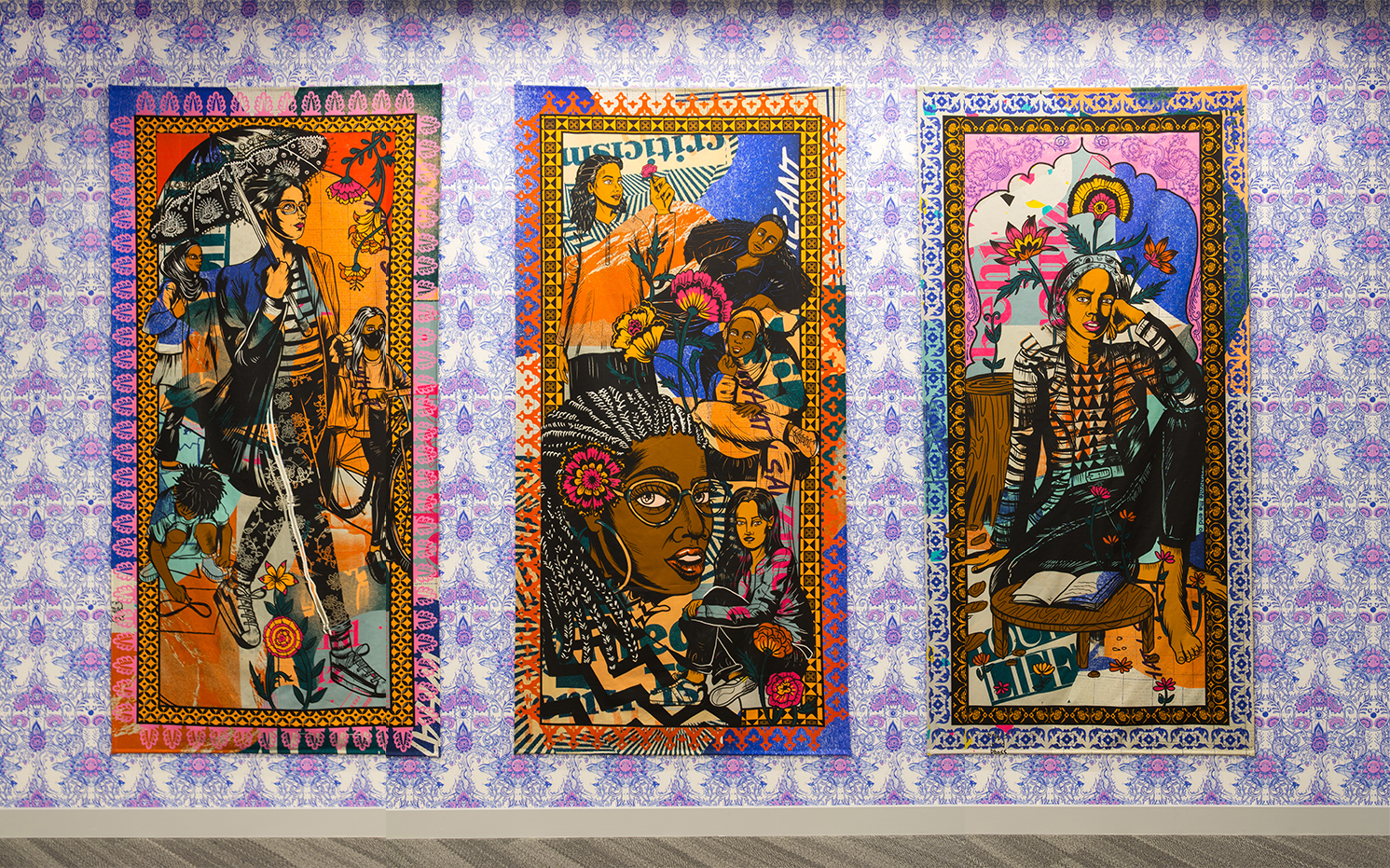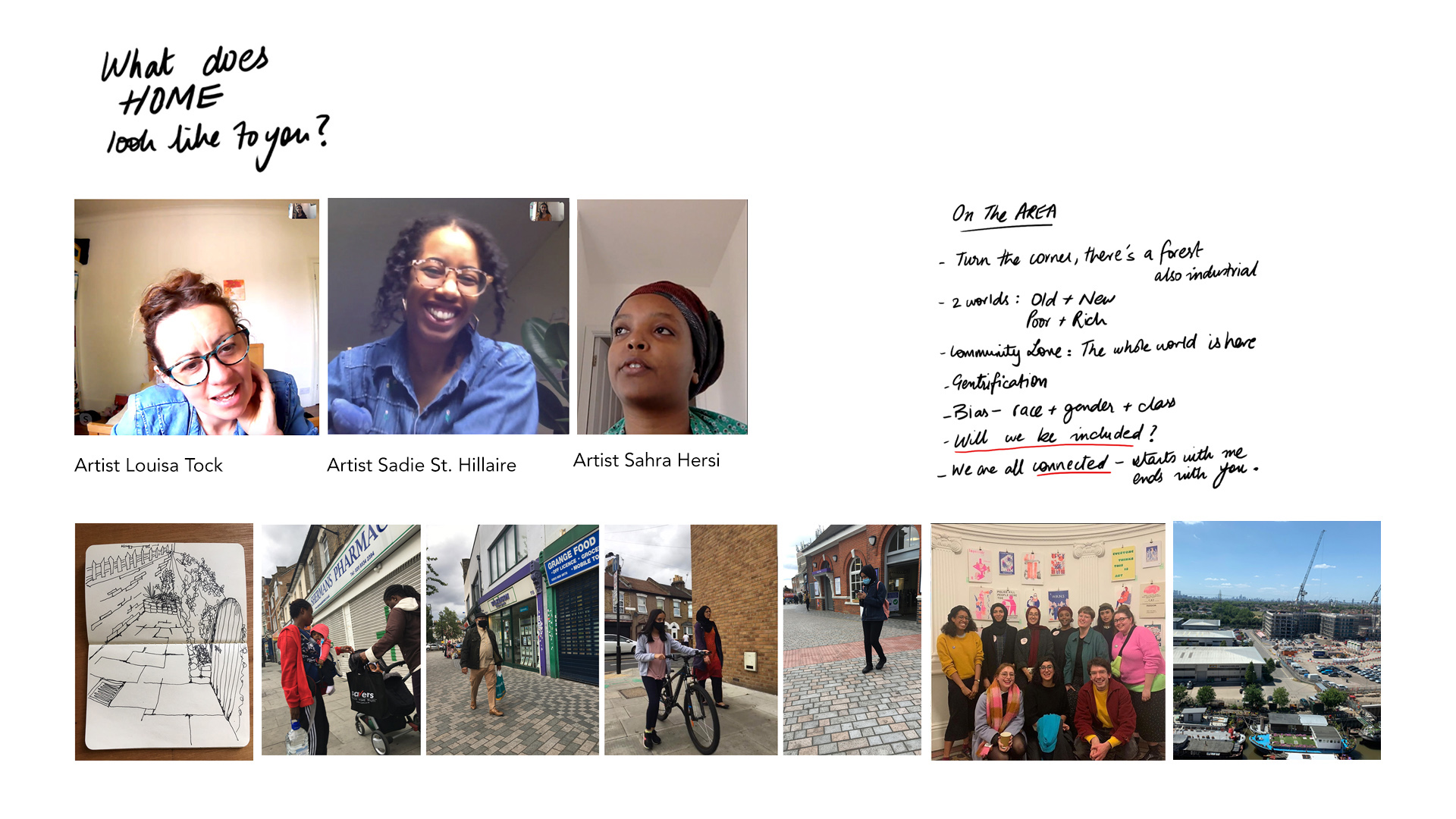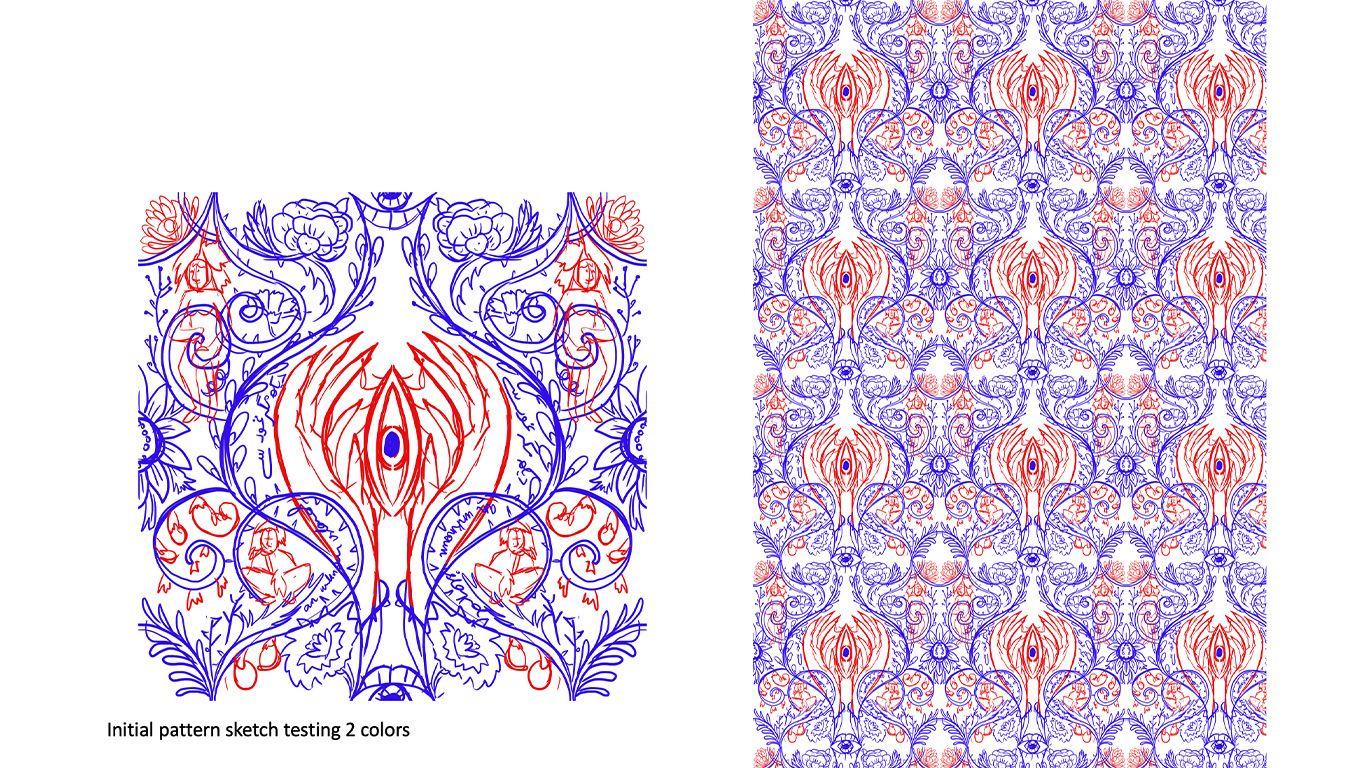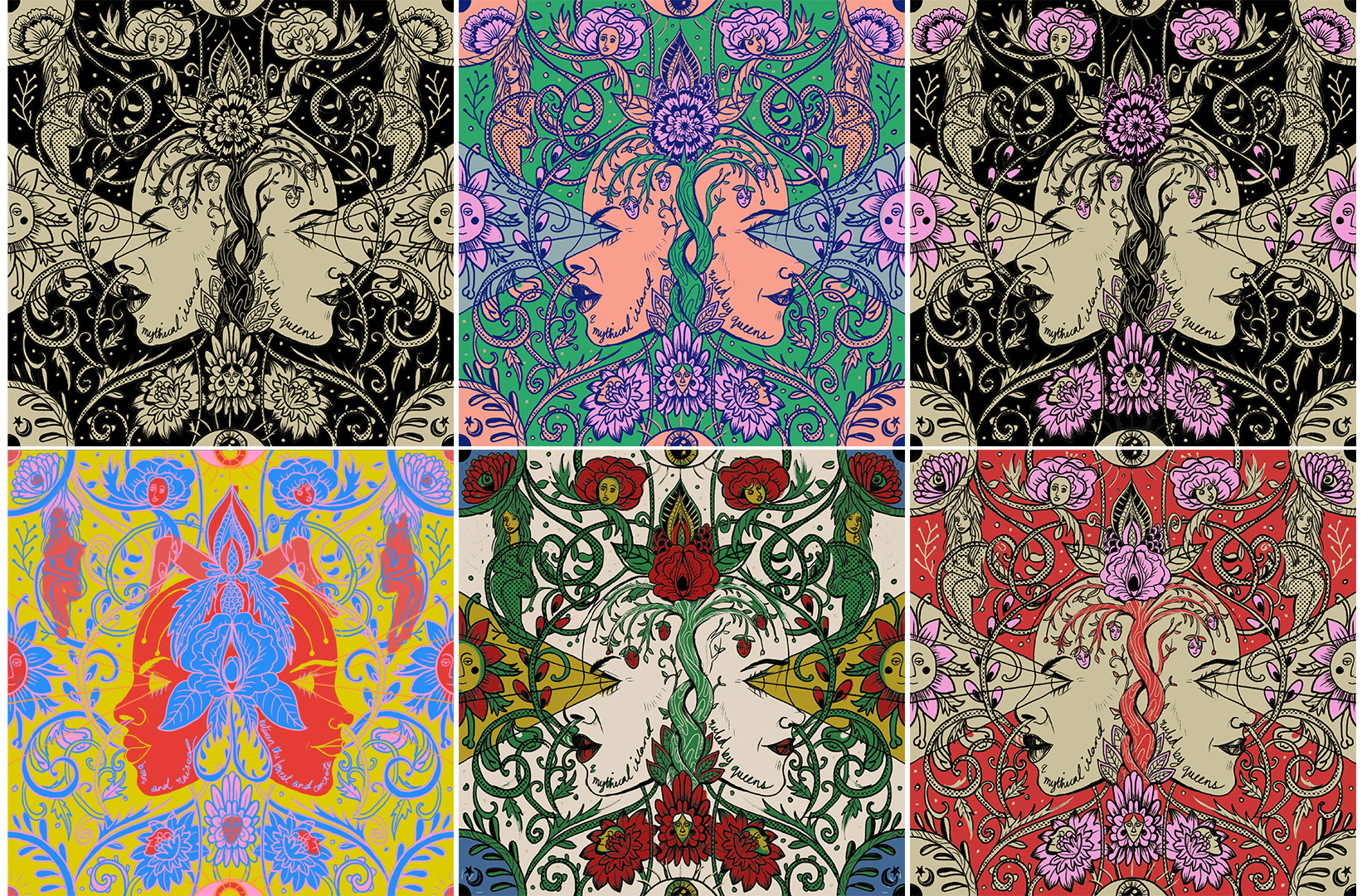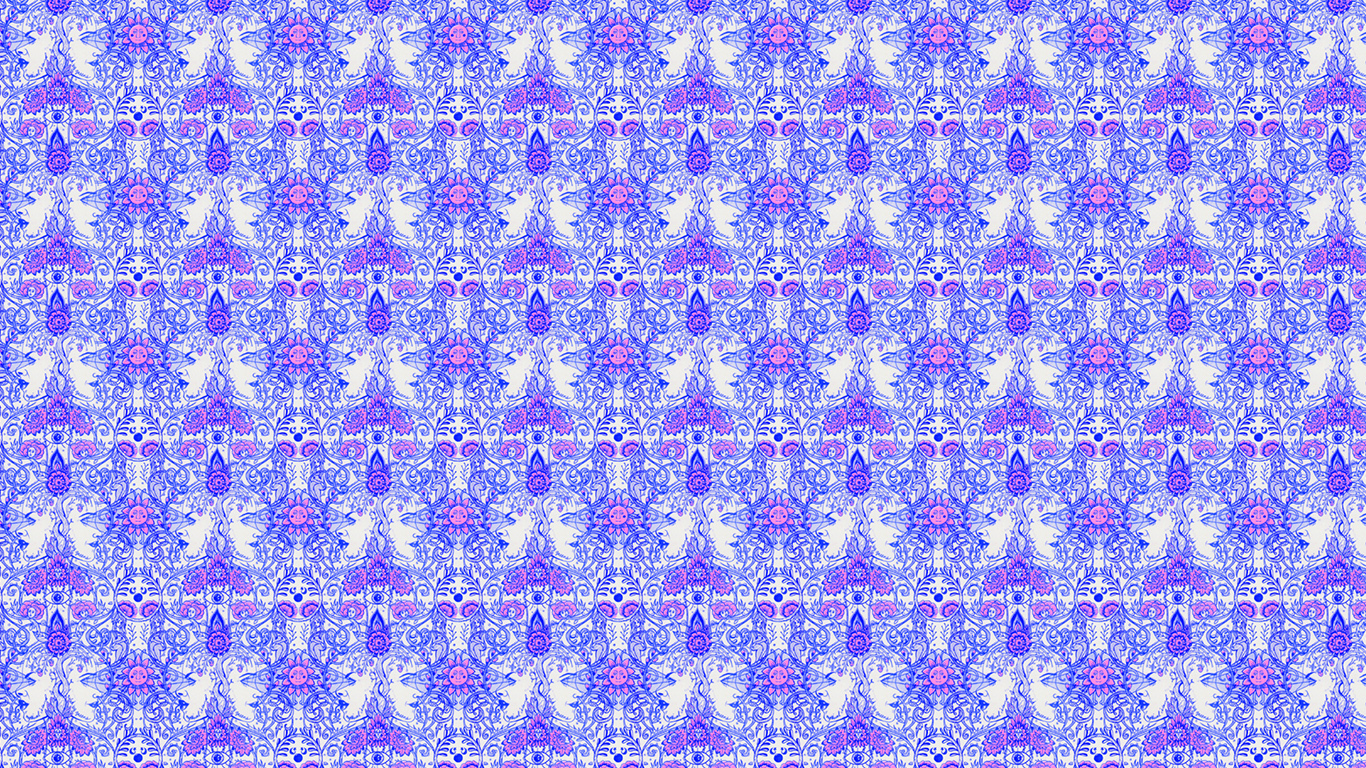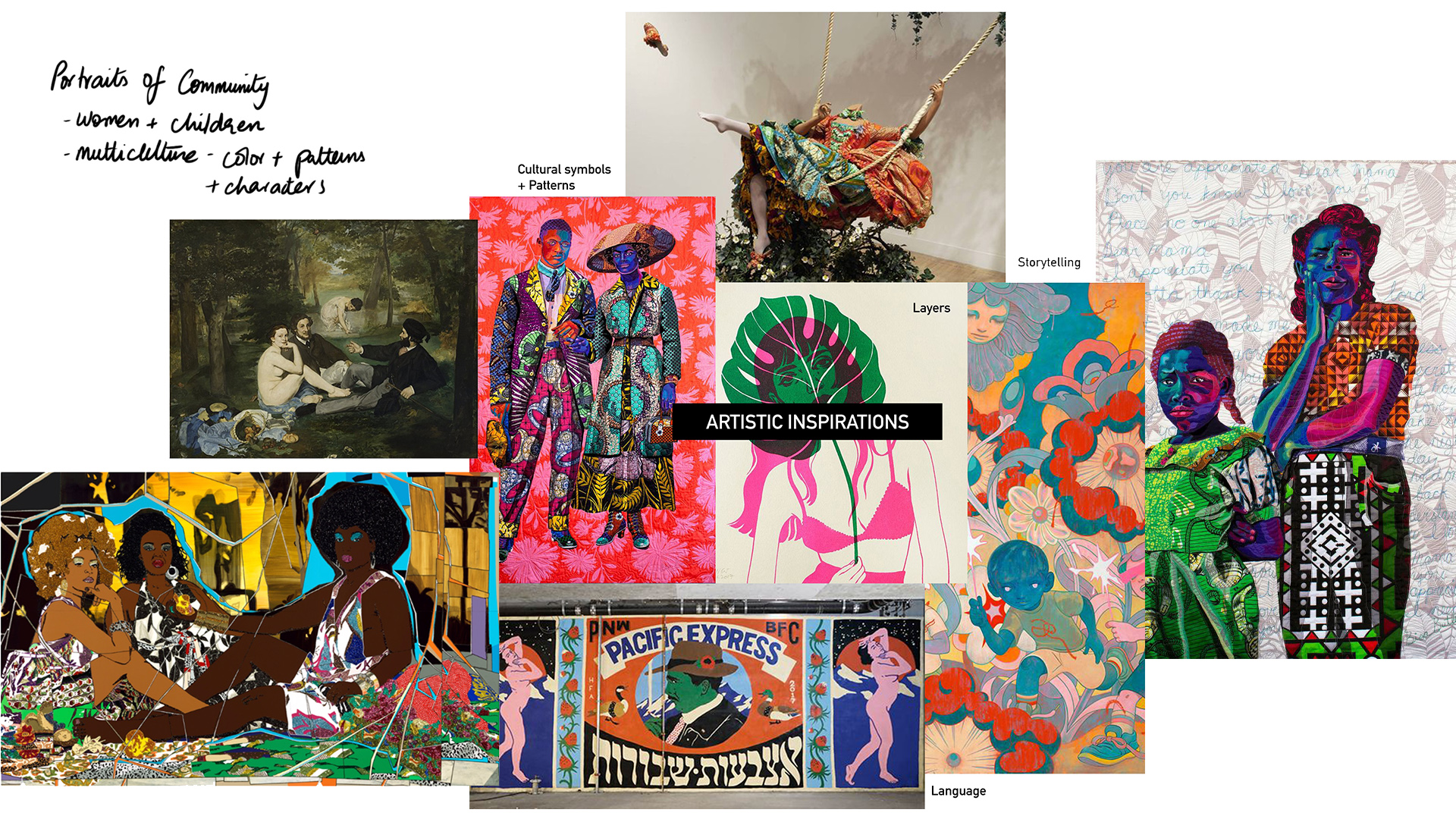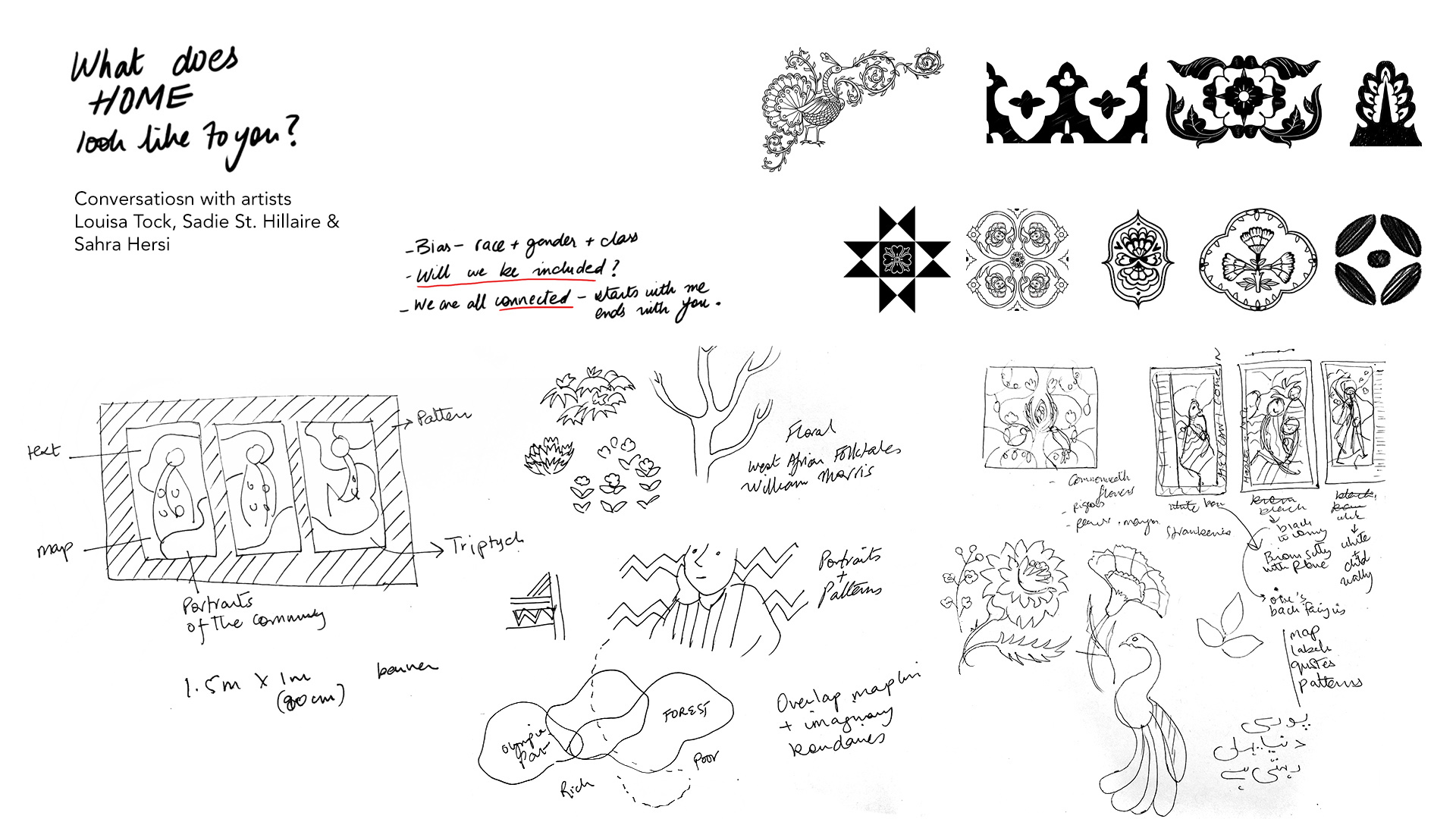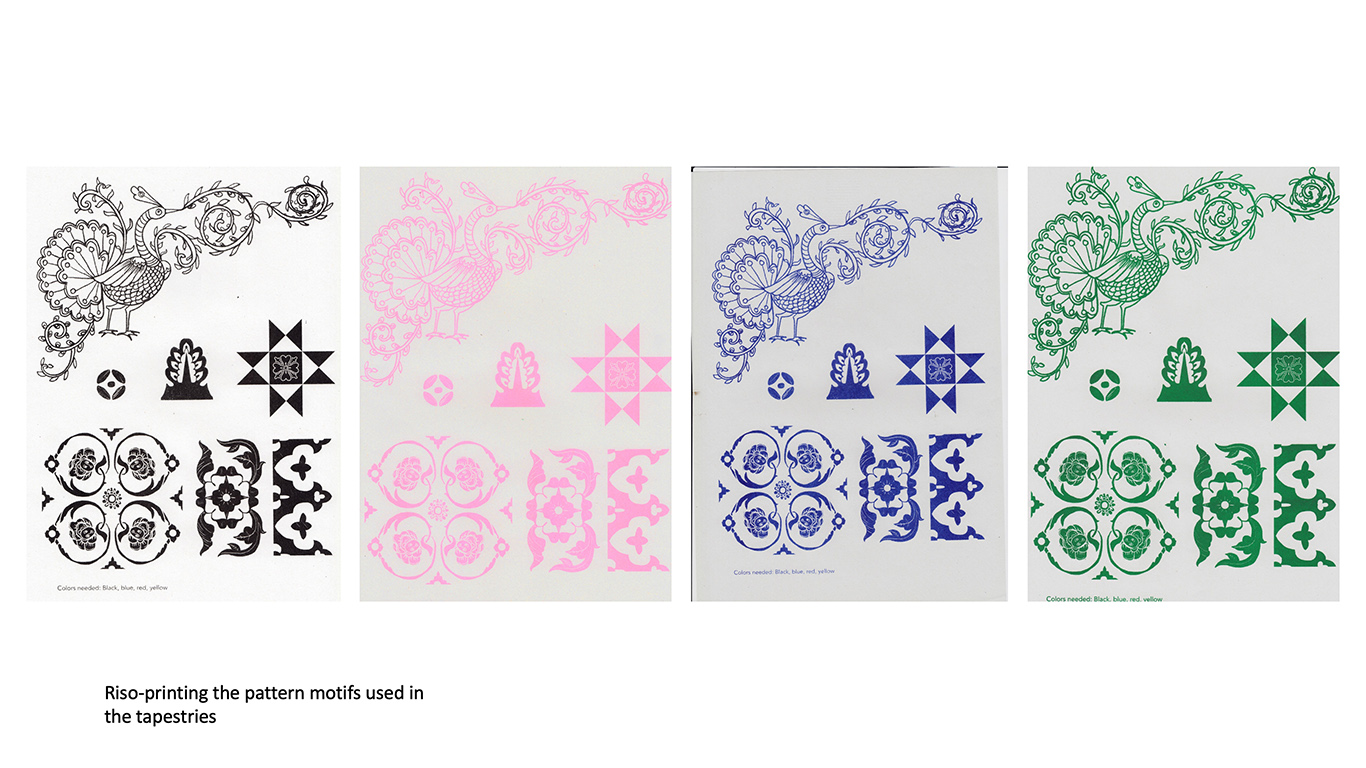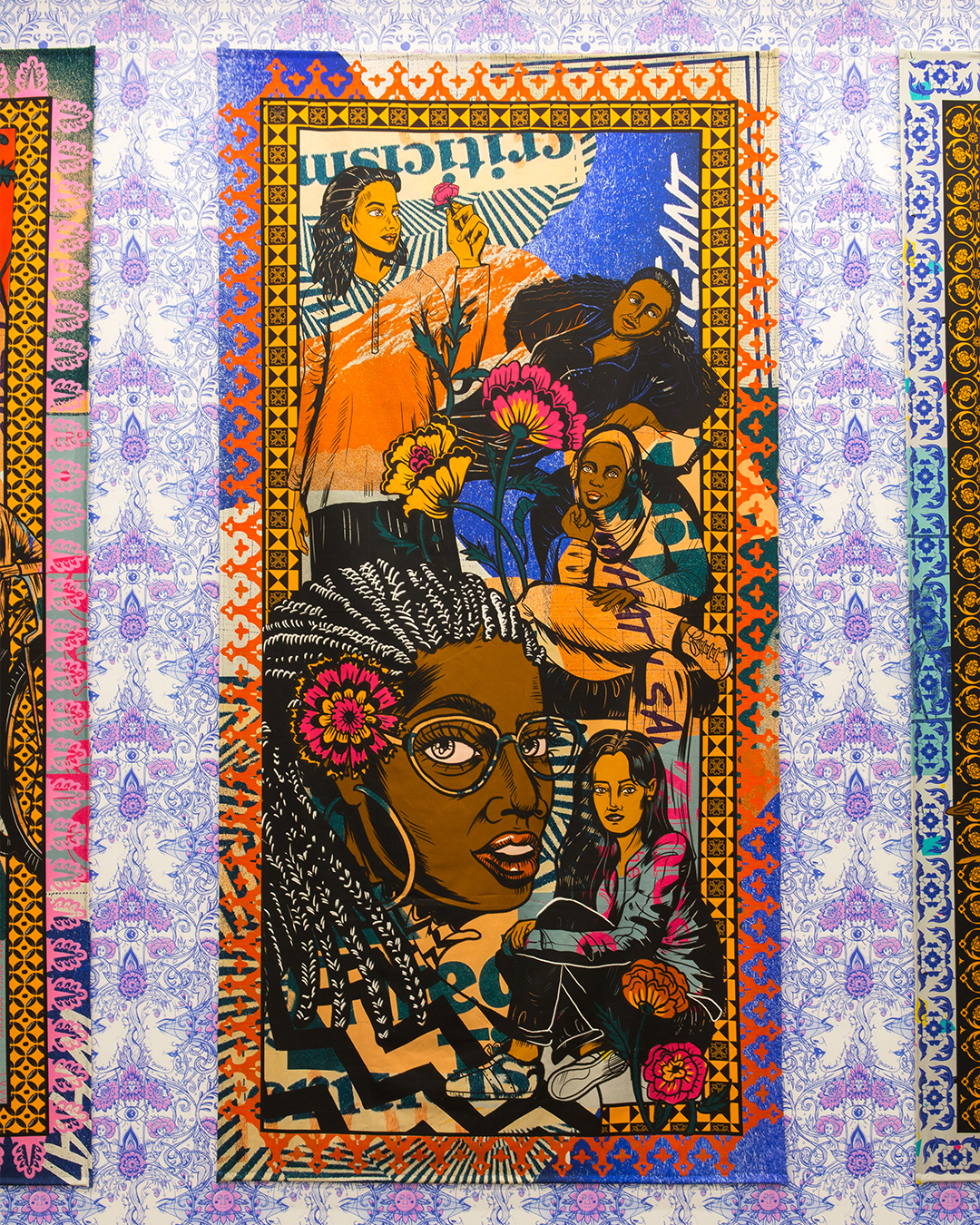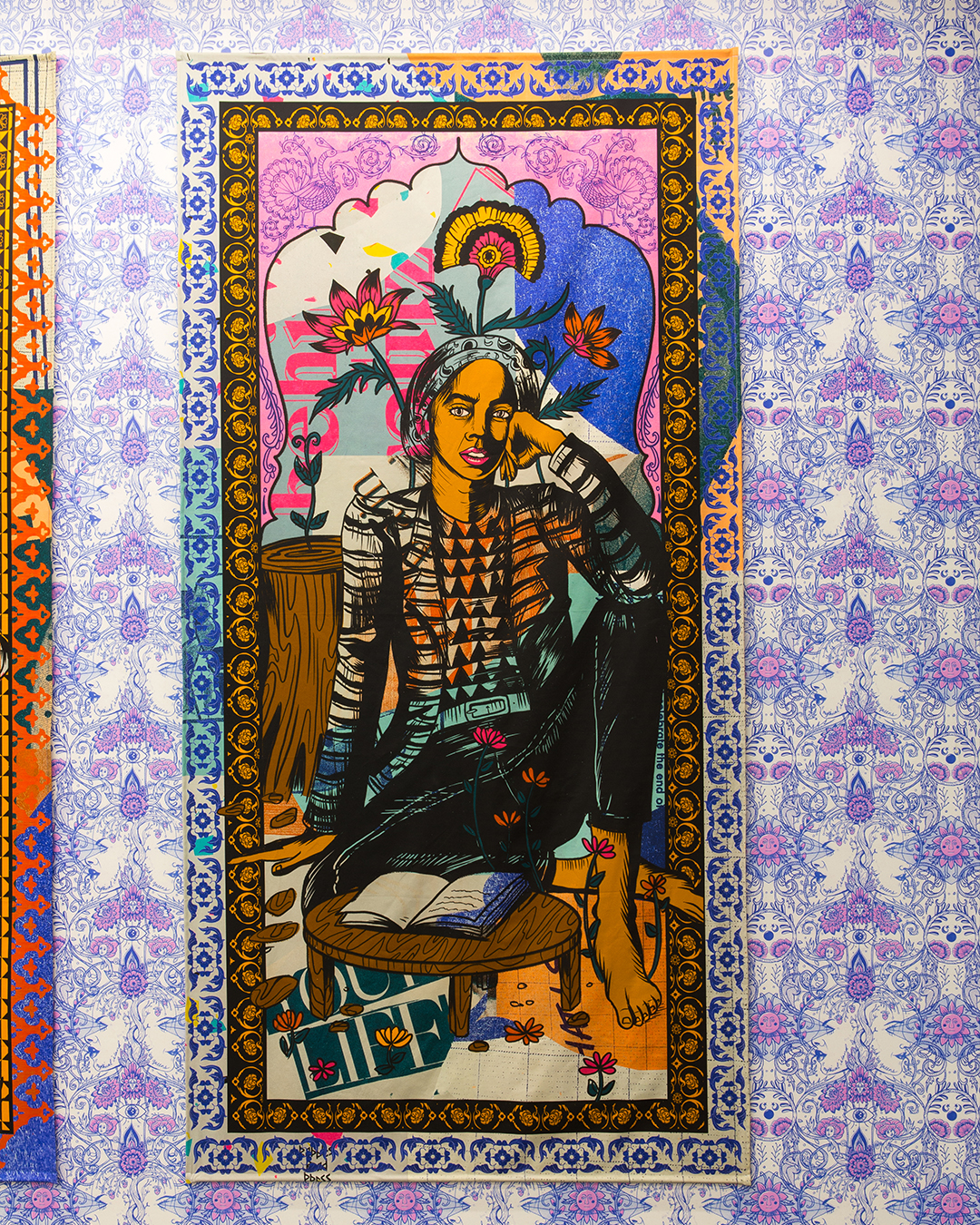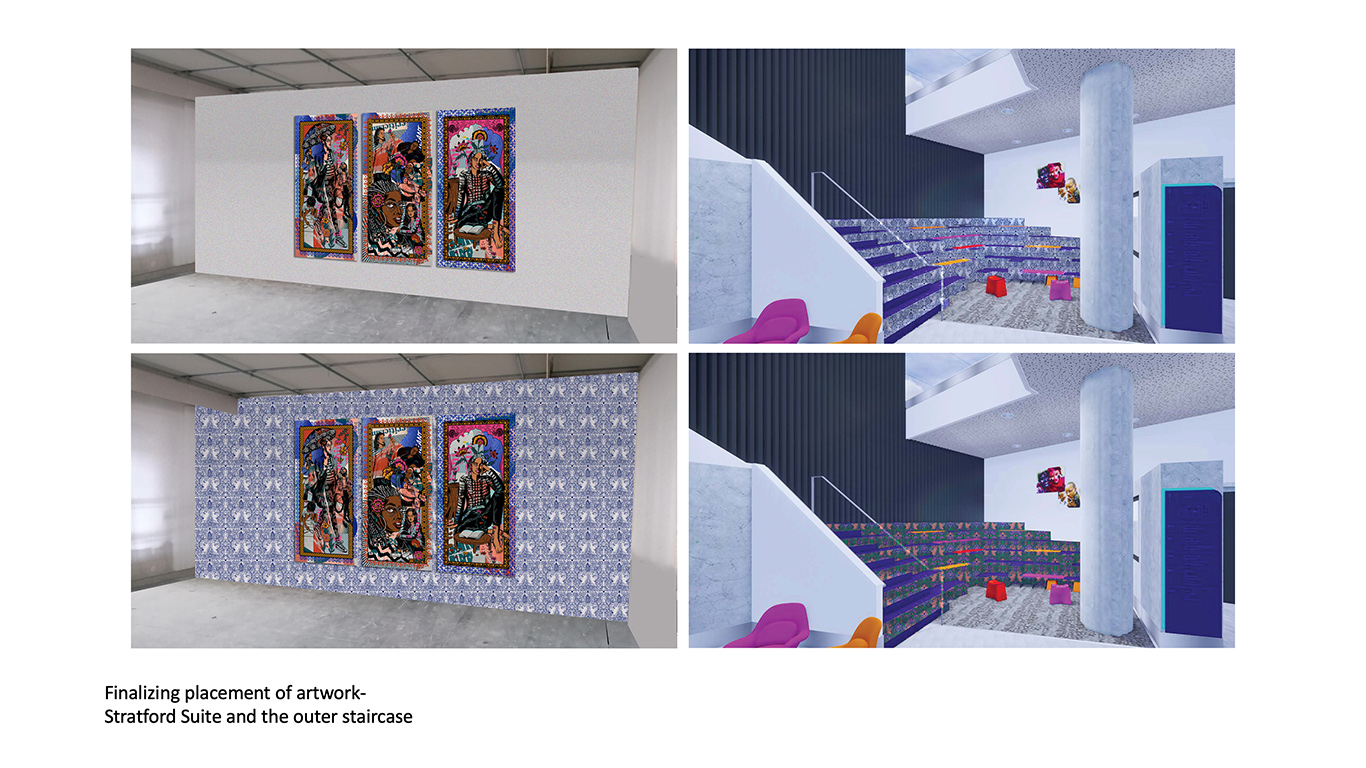“Housewarming” is a series of virtual residencies created by the British Council Arts and Create London connecting international artists and designers and three East London arts organisations for 6-week long residencies. My partners were Rabbits Road Press, a community Risograph print studio and publishing press founded and run by OOMK. You can read more about the virtual residencies here.
For my residency, I created a wallpaper and 3 tapestries based on my conversations with artists from E. London while being in lockdown in Lahore. My pieces will be installed at British Council’s new global headquarters in Stratford, London.

